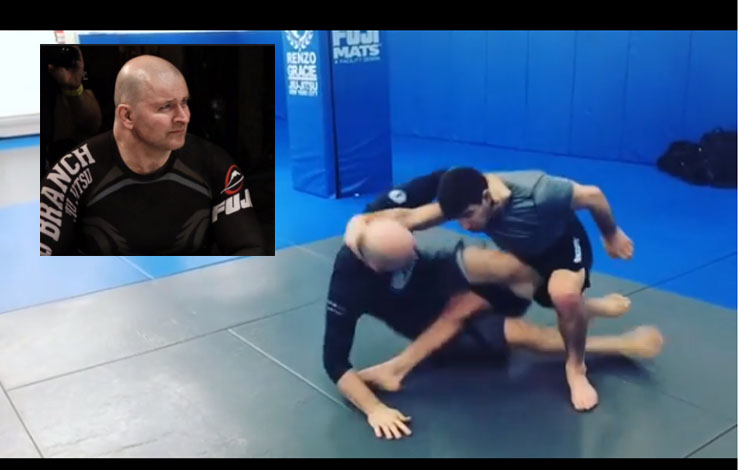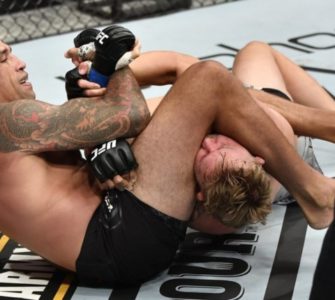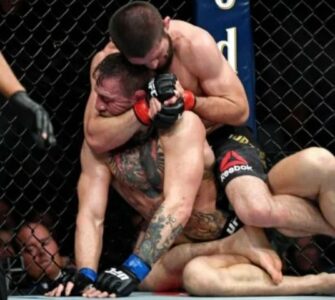John Danaher is widely considered one of the best contemporary bjj coaches around. Through the years he’s developed some of his own personal tweaks. Now in spite of being able to see him execute a scissor takedown (and many of his students in competition) this is not a technique that’s kosher among his students:
Kani Basami: The scissor throw – kani basami – is one of the more controversial moves in jiu jitsu. It is among my favorite moves – all of my students are very good at it and often use it in competition – AND YET I DO NOT PERMIT THEM TO USE IT IN CLASS AND I EVEN WOULD GO SO FAR AS TO SUPPORT A BAN OF THE MOVE IN COMPETITION. Why do I have such an odd point of view towards this move? Kani basami is one of the few moves with a truly unacceptably high accident rate – even when the move is performed well by well trained athletes. A tiny misjudgment of distance and height on a moving opponent can result in a badly broken leg. There are many safer ways to get into your opponent’s legs that work just as well. When I began teaching I saw many incidents involving flying Kani basami injuries and ultimately came to ban in it my classes. Yet this moment proved to be one of the most important of my coaching career. It made me ask a very interesting question. WAS THERE A WAY TO EMPLOY THE EFFICIENT MECHANICAL SCISSORING ACTION OF KANI BASAMI ON THE GROUND? (It would be safe on the ground as you are not jumping your full bodyweight onto a weight bearing leg). Initially I worked with the idea of back stepping from top position and this gave great results that students could use safely in everyday training to enter into inside heel hooks. Things got really interesting however, when kani basami was used from bottom position. The idea was interesting – INSTEAD OF FLYING TO YOUR OPPONENTS LEG IN STANDING POSITION – MAKE HIM FLY ABOVE YOU BY ELEVATING HIM FROM BOTTOM GUARD POSITION AND USE THE POWERFUL SCISSOR ACTION TO ENTER INSIDE HEEL HOOKS FROM UNDERNEATH. This was one hundred percent safe and proved to be extremely effective. How odd that an ancient move, which i do not allow my students to use in training with each other, should become one of the cornerstones of the modern leg lock game used by my students in a new fashion. My decision to ban its use in class more than fifteen years ago created an impetus that created a whole new direction for the move. I have not performed flying Kani basami since my hip replacement – no wonder my poor partner looks nervous! 😂😂
Besides the scissor takedown he also forbids jumping guard:
John Danaher Banned Jumping Guard At ALL Levels In His Gym
Banning moves: Jiu jitsu is a contact sport based around the skills of breaking joints and strangulation – as such injury is inevitable at some point. Nonetheless I believe there are certain movements in our sport that are unacceptably dangerous and which do very little to enhance the desired skills of the sport. In my experience, the most hazardous movements in jiu jitsu are not the joint locks and strangles, these usually cause no injury among responsible athletes and even when used recklessly, rarely do catastrophic damage.
Far more dangerous is UNCONTROLLED FALLING BODYWEIGHT. This is often the result of throws from standing position where people try to resist the throw and land poorly. Sometimes it is the result of a poor throwing attempt that results in one athlete sitting on the outstretched leg of his opponent and crushing the knee or ankle.
The worst offender however, is the most common and the most preventable – the common practice of people jumping to closed guard and landing on the opponents hips, knees or ankles with their entire weight and momentum. Thankfully this dreadful practice has been banned at white belt belt level after years of unnecessary injury.
It is time to extend the ban to all belt levels and training. I banned the practice entirely in all my classes many years ago after witnessing many terrible injuries. It is a worthless practice that teaches no worthwhile combat skills and has only (very) bad consequences with no redeeming features (unlike flying submissions which do teach valuable skills). We should enforce a rule that if an athlete wishes to pull guard they must make contact with their buttocks or back on the mat rather than their opponent. It is comical to see a sport where knee reaping is illegal, but the act of jumping guard, which has ruined more careers than all the joint locks and knee reaps put together, is perfectly legal for upper belts.
A good closed guard should be feared as Roger Gracie’s was – for its fine tactics and technique – not the injurious clumsiness of it jumping entry. The sport needs to ban this dangerous movement that does nothing to promote the skills of the sport and does much to reduce its safety
The third move to be banned is Tani otoshi because the famed coach claims he’s seen the most catastrophic injuries with it:

















